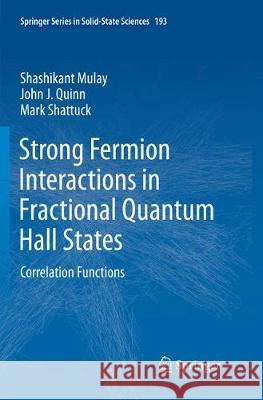Strong Fermion Interactions in Fractional Quantum Hall States: Correlation Functions » książka
topmenu
Strong Fermion Interactions in Fractional Quantum Hall States: Correlation Functions
ISBN-13: 9783030131180 / Angielski / Miękka / 2019 / 156 str.
Kategorie BISAC:
Wydawca:
Springer
Seria wydawnicza:
Język:
Angielski
ISBN-13:
9783030131180
Rok wydania:
2019
Wydanie:
Softcover Repri
Numer serii:
000904321
Ilość stron:
156
Waga:
0.24 kg
Wymiary:
23.39 x 15.6 x 0.91
Oprawa:
Miękka
Wolumenów:
01
Dodatkowe informacje:
Wydanie ilustrowane











